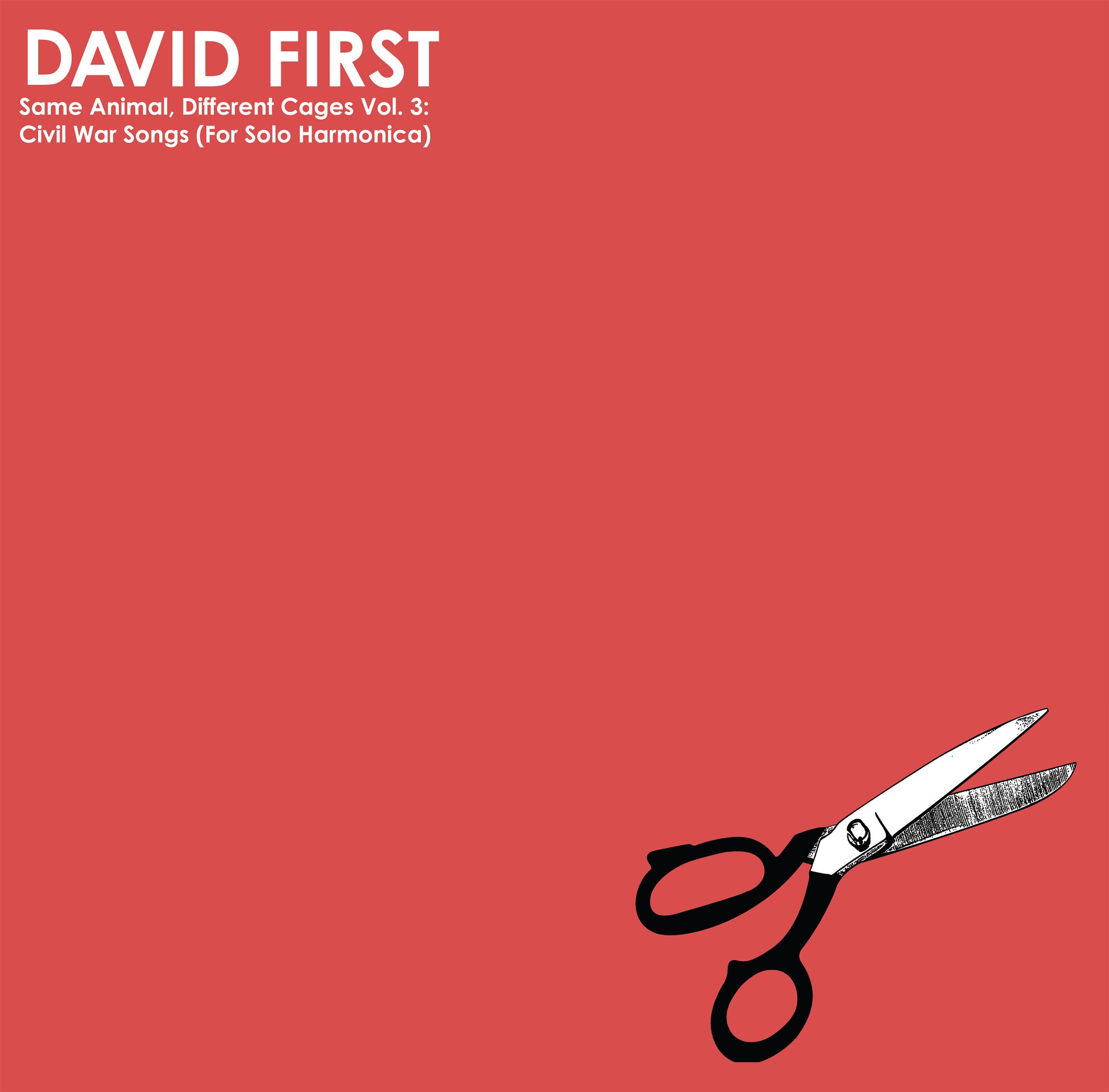David First, "Civil War Songs (For Solo Harmonica)"
 The third installment in David First's Same Animal, Different Cages album series (which are constructed from the use of a single instrument) is a contradictory piece of art. On one hand, it is clearly the most song-focused of the series thus far: a record of melodies and more conventional structures that contrast with the often pure experiments of the previous installments for guitar and analog synthesizer. However, by nature of the instrument used this time, a harmonica, I found it to be a more challenging work, but one that is still as rewarding as the releases that preceded it, and perhaps the most conceptually rich as well.
The third installment in David First's Same Animal, Different Cages album series (which are constructed from the use of a single instrument) is a contradictory piece of art. On one hand, it is clearly the most song-focused of the series thus far: a record of melodies and more conventional structures that contrast with the often pure experiments of the previous installments for guitar and analog synthesizer. However, by nature of the instrument used this time, a harmonica, I found it to be a more challenging work, but one that is still as rewarding as the releases that preceded it, and perhaps the most conceptually rich as well.
From the album and song titles, the instrument used, and the blood red cover art that envelops the record, the sense of conflict captured throughout Civil War Songs is a very distinct one.The harmonica has always been historically linked to the Civil War in the United States, and at times I could not help but imagine the music here being paired with old photos from the era and the ubiquitous narration of the Ken Burns documentary.First's playing of the harmonica is at times unconventional, however it is through this style that makes it sound contemporary: a time which is very reminiscent of the past.
As has been a hallmark of this series, David's playing throughout Civil War Songs is presented as purely as possible:no processing or effects.Or at least a minimal amount of the latter, since it is not clear if the tasteful amount of reverb that appears is an effect or just naturally occurring from the recording session.The playing brings out elements and sounds that are otherwise unexpected though, which is one of my favorite parts of the album.For example, "Hymns for the Sick and Poor" is harsh, but due to the natural resonance of the instrument and First's aggressive performance.The elongated opening notes to "Transition Chant" could easily be mistaken for a synthesizer, with its dissonant lower notes peppered with abrasive, sawtooth oscillator-like buzzes that permeate it.
These moments are scattered throughout the albums 11 songs, which vacillate somewhere between traditionalism and radical reconstructions of American folk music.Throughout "Song for the Righteous Earth Protectors" the notes are drawn out, a bit drone-like and bordering on unpleasant.The playing jumps between depressing and manic, with David coaxing out some pleasantly shrill and harsh sounds from his harp."Joy Sorrow Love March" and "My Family of Friends" lean a bit more toward traditional, with their conventional melodic progressions and reoccurring motifs.
Somewhere between these two extremes is a song like "Song for the Healing Sciences," in which First begins with conventional playing, but as the piece goes on he elongates selected notes, stretching them out and allowing the core, tonal components of the harmonica become the focus more than the melodies they inhabit.This strategy appears on "Dance for Balance, Strength and Will" as well, and at one point taking on a stuttering, repeating quality that almost resembles a broken record.
A superficial listen to Civil War Songs (For Solo Harmonica) may paint it as a traditional collection of new Americana folk songs, but nothing David First creates is intended to be taken at just face value.With just the one instrument he captures an entire history of the harmonica, but, perhaps more abstractly, the history of the United States, never shying away from the ugly and violent elements that are resurging in 2017.Let us just hope that the album is more indicative of reviving the music of the era, rather than the violent, divisive spirit in which it was originally conceived.
samples:
 



